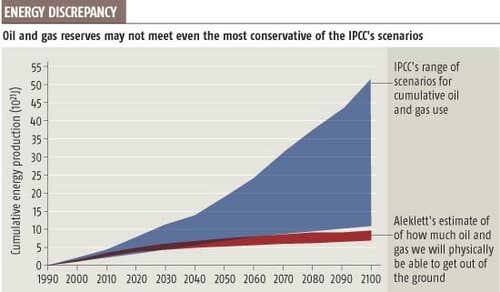The Caribbean, often romanticized for its azure waters, pristine beaches, and vibrant cultures, is now facing an existential threat: climate change. This paradisiacal region, home to diverse ecosystems and unique marine life, is grappling with the repercussions of rising temperatures and changing weather patterns. But have you ever pondered how these gradual shifts could transform your ideal vacation spot into an unrecognizable landscape? With all its beauty, the Caribbean may appear invincible, yet it stands at the precipice of significant ecological disruption.
One cannot discuss climate change in the Caribbean without addressing the rising sea levels. The Intergovernmental Panel on Climate Change (IPCC) predicts that by 2050, sea levels could rise between 1.5 to 2.5 feet. For many low-lying islands, this could mean devastating losses. On islands like the Bahamas, where much of the land sits just a few feet above sea level, entire communities may find themselves at risk of inundation. Coastal erosion can obliterate beaches, which play a pivotal role in tourism—an economy heavily reliant on the natural beauty of the islands.
This brings us to the question: what will happen to the colorful coral reefs that protect these shores? Coral reefs, the undersea metropolises of the ocean, are crucial for maintaining biodiversity and offering protection against wave action. As temperatures rise, coral bleaching occurs, a phenomenon triggered when corals expel the algae living within them. This can lead to widespread mortality among coral species, ultimately affecting all marine life reliant on these habitats. Vulnerable species like the parrotfish and sea turtles face dire consequences as their habitats diminish and ecosystems collapse.
Besides the threat to marine environments, climate change induces alterations in weather patterns, resulting in an increase in the severity and frequency of tropical storms. The Caribbean is already notorious for its hurricane season, which extends from June to November. However, as global temperatures rise, these storms will not only become more frequent but also more intense. The devastation wrought by hurricanes can lead to complete infrastructural degradation in vulnerable island nations. Property destruction, power outages, and loss of life are just the tips of the iceberg when it comes to the fallout from these natural disasters.
Furthermore, increased rainfall can cause flooding in areas that are unaccustomed to prolonged wet conditions, leading to damage of natural resources, agriculture, and human settlements. Think about how vital agriculture is to local economies, from sumptuous sugarcane to aromatic spices. With unpredictable weather patterns disrupting growing seasons and leading to soil erosion, food insecurity becomes an increasingly salient issue, threatening both livelihoods and culinary heritage.
As temperatures reshape the Caribbean’s environment, the impact on biodiversity should not be overlooked. Endemic species—a term used to describe species native to a specific location—face higher risks of extinction as their habitats alter or diminish. The unique silhouettes of iguanas basking on rocks or the enchanting songs of native birds are under threat. The changes in ecosystems impact not only wildlife but also local cultures and economies. What might that mean for future generations who rely on sustainable practices tied to their natural environments?
Social issues compound the complexity of climate change in the Caribbean. Many island nations grapple with poverty and insufficient infrastructure, rendering them particularly vulnerable to environmental shifts. When disaster strikes, the most marginalized communities often bear the brunt, raising questions of equity and justice. How can the affected populations rebuild when external assistance is delayed or insufficient?
Tourism, while a significant contributor to the regional economy, is paradoxically both a boon and a bane in the context of climate change. Often deemed a lifeblood for island nations, tourism thrives on the natural beauty that climate change threatens. As reefs degrade and beaches erode, will tourists still flock to these destinations, or will their desire for idyllic vacations lead them elsewhere? This poses a stark challenge for economies reliant on the very environments that are being compromised by climate change.
What can be done to mitigate these challenges? There is an urgent need for sustainable practices and innovative approaches to conservation. Initiatives focusing on renewable energy sources, like wind and solar power, can lessen dependence on fossil fuels, diminishing the carbon footprint. Furthermore, fostering public awareness around climate action and environmental stewardship is crucial, engendering a culture of responsibility among residents and visitors alike.
The significance of building resilience cannot be overstated. Communities must strategize on adapting their infrastructures to withstand tropical storms, anticipating shifting weather patterns. Urban planning must integrate green spaces, which have been shown to mitigate flooding and improve air quality. Restoration of mangroves can shield shorelines while serving as vital habitats for marine life.
Yet, despite the daunting obstacles, there is hope. The Caribbean has historically shown resilience in the face of adversity. Local communities possess invaluable knowledge of their environments that can inform sustainable practices. Collaborative efforts among governments, NGOs, and citizens to address climate issues head-on can pave the way for a sustainable future.
In conclusion, the Caribbean’s climate crisis demands urgent attention and action. Once treasured as verdant islands of tranquility, these paradises now face multifaceted challenges due to global warming. As the region navigates these turbulent waters, its future will depend significantly on a collective commitment to sustainability, resilience, and adaptability. Will the Caribbean retain its charm and vitality for future generations, or will it succumb to the very climate changes that threaten its paradise?







